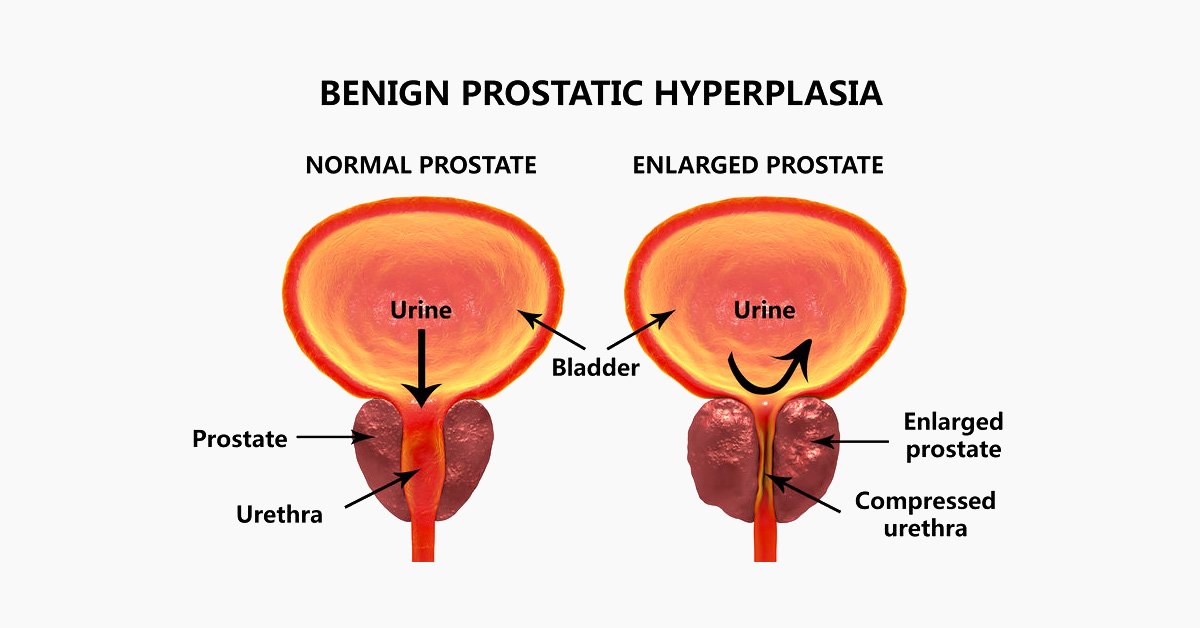Enlarged Prostate: Benign Prostatic Hyperplasia
During puberty, the volume of this gland increases because of the presence of the male hormones (androgens) acting as a stimulant.
A common pathology, present in 50% of men over 50 years and 88% of men with more than 80 years.
The irritation in the bladder that follows the failure to discharge provokes disorders very frequently.
THE MAIN SYMPTOMS ARE:
– Increased frequency of urination
– Weak urinary stream
– Hesitancy while urinating
– Dribbling after urination
– Necessity of efforts while urinating
– Burning sensation
– Painful urination
The medical examination in this case involves the performance of a physical abdominal examination, especially in the abdominal rectal area, which gives an idea about the volume of the prostate gland and highlights the presence of suspicious nodules; the patient will also fill a questionnaire, called I-PSS, to analyze the severity of the symptoms. After that, some further investigation is necessary: a urine test with eventual urine culture, PSA measurement (prostate-specific antigen), kidney function tests and a Uroflowmetry (test that measures the speed of the urinary stream during urination, simply performed by urinating into a special instrument called a flow meter). After that, depending on the clinical and therapeutic needs, a transrectal prostate ultrasound, abdominal ultrasound, urodynamic examination with a pressure-flow relationship curve may also be requested.
Among the most common complications of Benign Prostatic Hyperplasia we can observe an increased risk of urinary tract infections due to retention of urine in the bladder. There are two types of treatments: the medical and the surgical. The Medical treatment employs drugs to alleviate the symptoms, such as alpha-blockers. These drugs relax the prostate and bladder neck thus increasing the flow of urine flow.
Besides the alpha-blockers, the 5-alpha-reductase inhibitors are used as well. The therapy of association between alpha-blockers and 5-alpha-reductase inhibitors has proven successful in drastically reducing the volume of the prostate.
Enlarged Prostate: Benign Prostatic Hyperplasia Medical Tourism Italy
We have a strict policy about privacy and data usage:
- We will only use your contact information to take care of your case.
- Your phone number or email address will not be shared with any third parties.
- You will speak with a prepared Personal Health Planner with whom you can be 100% honest and upfront about any problem you’re experiencing.
- It is, and it will always be, 100% free.
